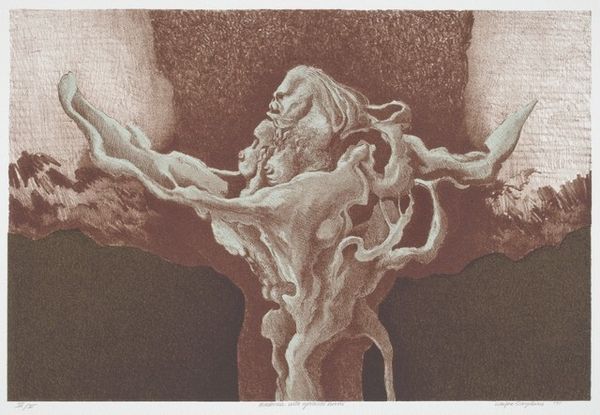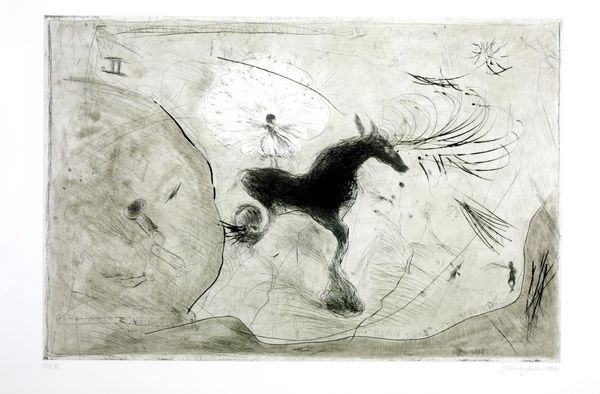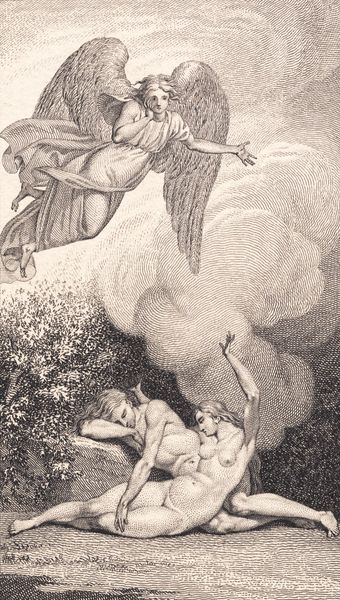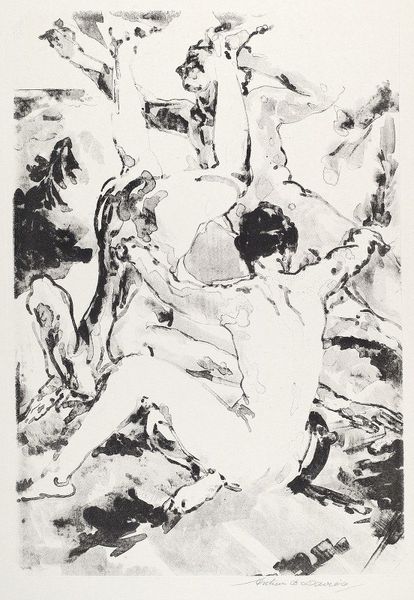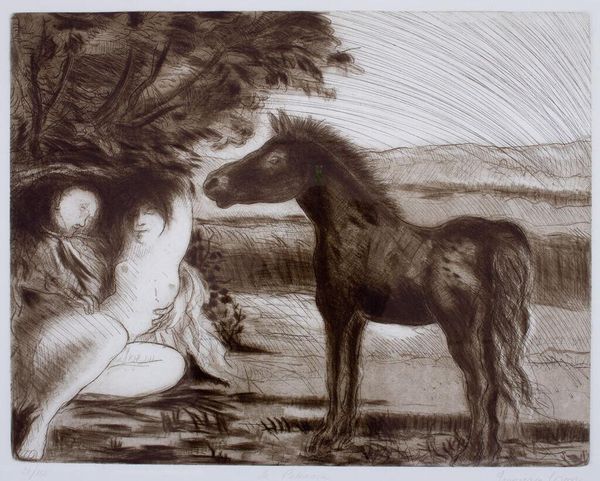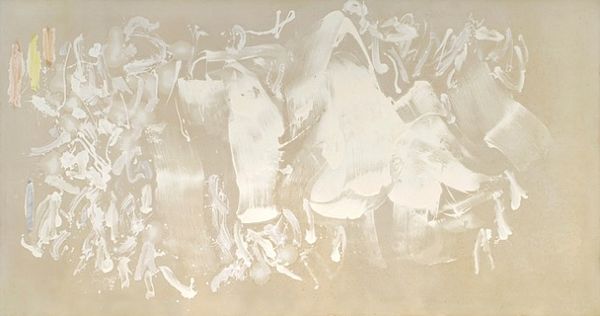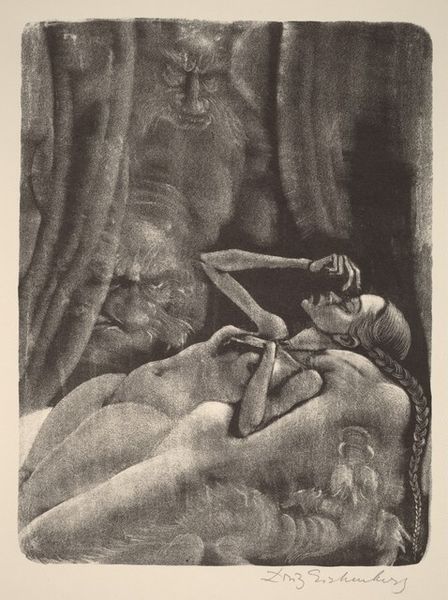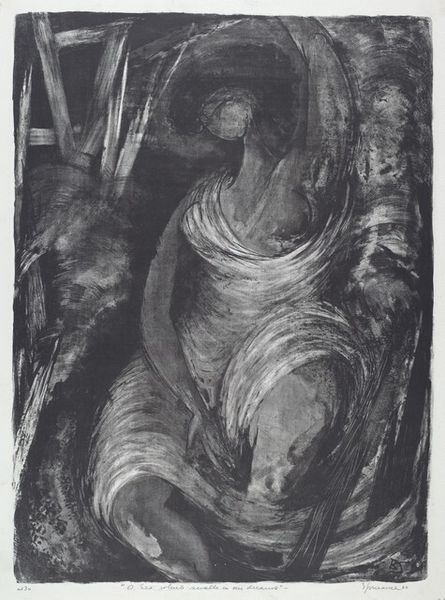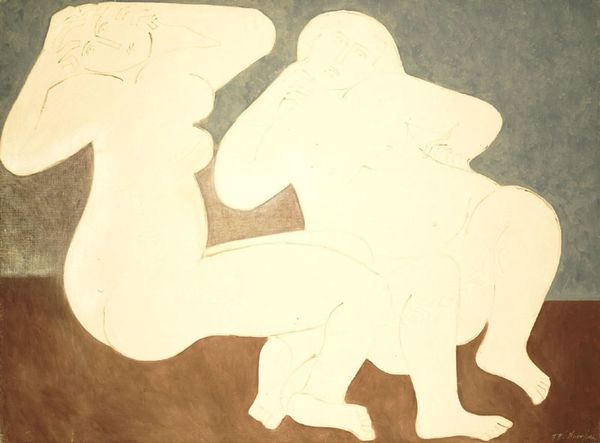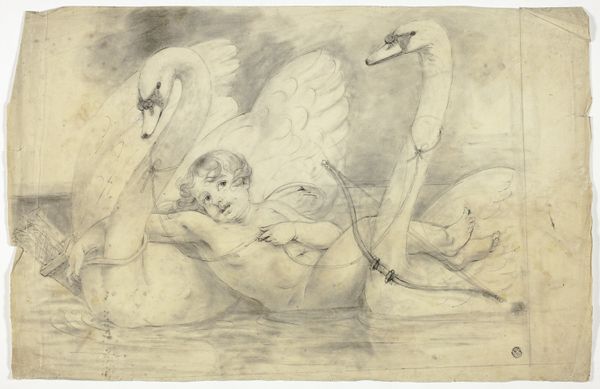
drawing, print, intaglio, monoprint
#
drawing
#
narrative-art
# print
#
intaglio
#
charcoal drawing
#
figuration
#
monoprint
Copyright: National Gallery of Art: CC0 1.0
Curator: This is Benton Spruance's "Jacob and the Angel," a monoprint intaglio completed in 1950. What strikes you initially about it? Editor: The raw, almost visceral feel of the line work is quite compelling. It gives the impression of struggle and raw emotion before I even consider the narrative itself. Curator: The piece clearly evokes a sense of conflict, wrestling. Given its source material, the Hebrew Bible's story of Jacob wrestling with an angel, we see more than just physical strife here, don’t we? Editor: Absolutely. The muted tones contribute to that sense of unease. Brown is a common earth tone; however, here it becomes something unsettling—more like dried blood. The restricted palette lends a unique intensity to the composition as well. Note how it forces us to really study how the forms intersect and how the negative space shapes their interaction. Curator: Precisely! The earthy palette connects to themes of humanity and conflict. Jacob’s story is fundamentally one of self-transformation through conflict with an unknown being. Could Spruance be engaging the post-war anxieties through Jacob’s quest for identity, which would echo the world’s own grappling with shifting powers and ideologies? Editor: Interesting, I hadn't immediately thought about that but now, that the stark white patches interspersed feel like ruptures, wounds. This interpretation is in accord with your line of thinking! The heavy diagonals create this vortex. Curator: Indeed. Jacob emerges transformed, though wounded, ready to embrace his new identity. Art, particularly narrative art, always asks: What transformative struggles resonate for the viewer, here and now? Editor: I must concede, looking deeper really highlights the formal harmony beneath that tension. Curator: So you agree that Jacob is always already us, then? Editor: Ha! Touché! In short, the intense lines do speak volumes of conflict, and as you highlighted, understanding the context expands the view greatly.
Comments
No comments
Be the first to comment and join the conversation on the ultimate creative platform.

